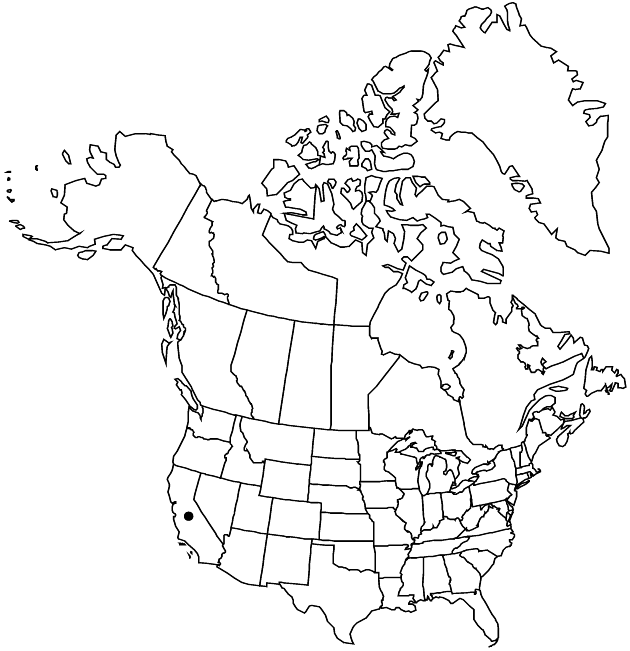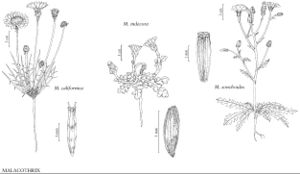Malacothrix californica
in A. P. de Candolle and A. L. P. P. de Candolle, Prodr. 7: 192. 1838.
Annuals, 4–45 cm. Stems 1 (scapiform), erect or arcuate-ascending, mostly glabrous (shaggily piloso-hirsute proximally and at bases of heads). Cauline leaves: proximal oblanceolate to linear, pinnately lobed (lobes usually linear to filiform, sometimes broader), not fleshy, ultimate margins entire or dentate, faces usually shaggily piloso-hirsute (at least proximally), glabrescent; distal usually 0. Calyculi of 12–20, lanceolate to linear bractlets, hyaline margins 0.05–0.2 mm, abaxial faces shaggily piloso-hirsute to arachnose. Involucres (8–) 10–15 × 5–6 mm. Phyllaries usually 20–26+ in 2-3+ series, (midstripes often reddish) lanceolate to lance-linear or subulate, unequal, hyaline margins 0.1–0.5 mm wide, abaxial faces (of outermost, at least) shaggily piloso-hirsute to arachnose (at least proximally). Receptacles sparsely bristly or glabrous. Florets 40–250; corollas usually yellow to pale-yellow (often with abaxial reddish stripes), sometimes white, 16–20 mm; outer ligules exserted 11–13 mm. Cypselae ± prismatic, 2–3.4 mm, ribs extending to apices, 5 more prominent than others; persistent pappi of 12–15+, irregular, lance-deltate teeth plus (1–) 2 bristles. Pollen 70–100% 3-porate. 2n = 14.
Phenology: Flowering Apr–Jun.
Habitat: Open sandy soil in grasslands, oak woodlands, chaparral, or desert margins
Elevation: 0–1700 m
Distribution

Calif., Mexico (Baja California)
Discussion
Malacothrix californica grows in the San Joaquin Valley, central western California, southwestern California, and the Mojave Desert.
Selected References
None.
Lower Taxa
"fine" is not a number."]" is not declared as a valid unit of measurement for this property.
